Sandra Day O'Connor: Arizona ranch girl, American legend
She made history when President Ronald Reagan appointed her to be the first woman to serve on the U.S. Supreme Court.
She shaped history during almost a quarter-century on the bench.
Her life inspired others to blaze their own trails, in law and in other fields.
Sandra Day O'Connor was an independent thinker shaped by the Arizona desert she loved.
The Arizona ranch girl, who died Dec. 1, 2023, will be remembered as one of the most influential women in American history.
The Arizona Republic covered O'Connor from the time she first entered public life in the state in the 1960s, first as an assistant attorney general, then as a lawmaker and later as a judge.
Our archive is filled with photos and stories of her beloved Lazy B Ranch, her time as Arizona Senate majority leader, her advocacy of judicial appointment rather than partisan election, her 1981 nomination to the court and her confirmation hearings.
Her role as a frequent deciding vote made headlines throughout her time on the court, on issues as controversial as abortion and gay rights. The opinions she wrote grew from a firm belief in the rights of individuals to decide crucial issues in their own lives, free of government interference.
When she retired from the court after nearly 25 years, she returned to Phoenix, making frequent public appearances.
Our reporters and videographers have tapped that legacy of coverage to pull together a more complete story of her life in words, photos and video in this 11-part biography.
This is her story.
With a work ethic gained on a ranch, O'Connor embodies Arizona
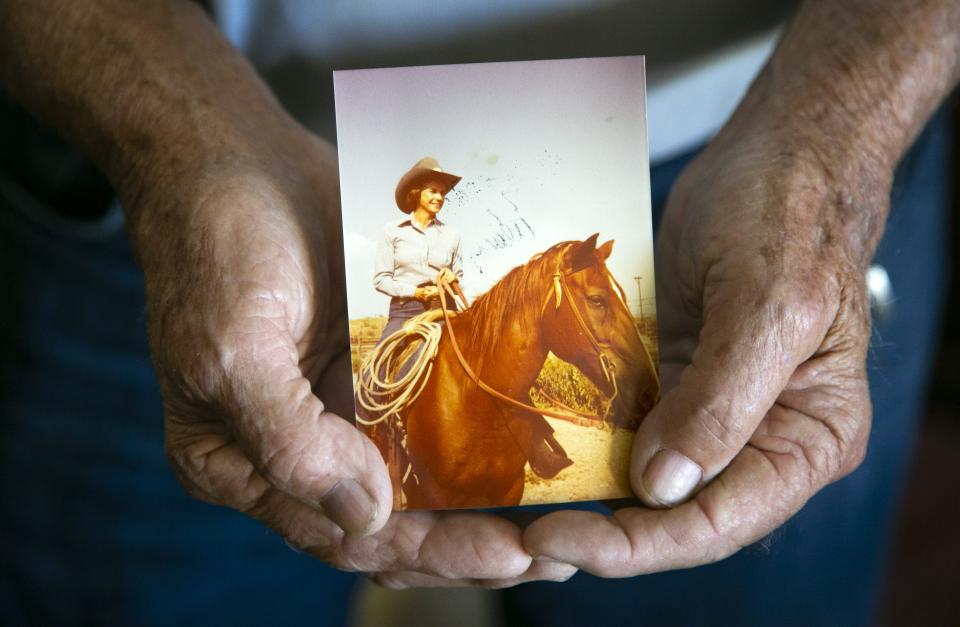
O'Connor was born in El Paso and was raised on the Lazy B Ranch in southeastern Arizona.
This start, and the years of hard work on the dusty outpost, became something a novelty when she was appointed to the Supreme Court. But she accurately reflected what it meant to be from the Grand Canyon State.
Chapter 1: O'Connor's work ethic defined by upbringing in Arizona
In childhood, ranch life taught some important lessons
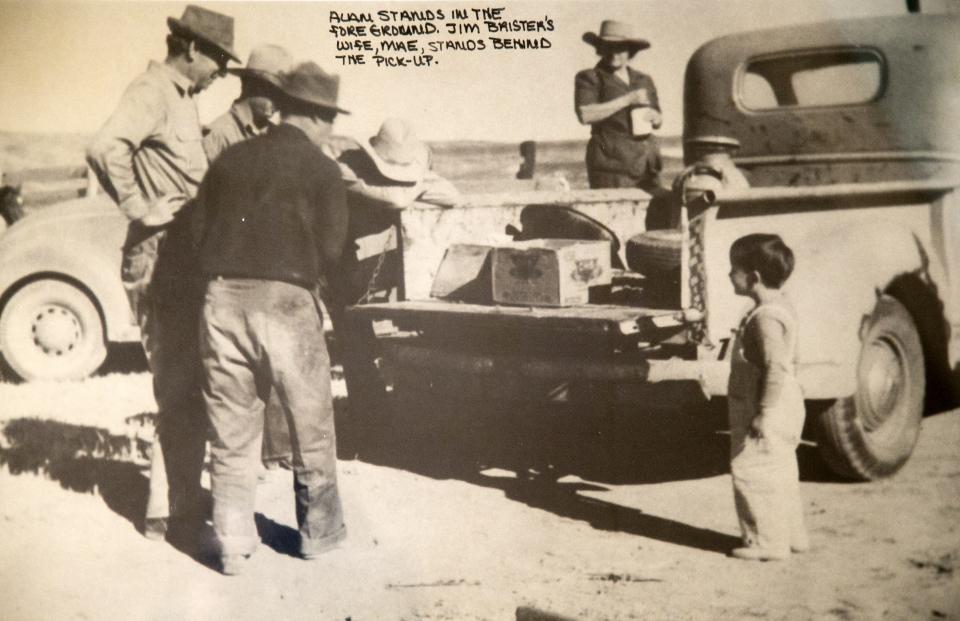
Life on the Lazy B Ranch wasn't easy — it was "no country for sissies," she wrote in a book.
However, working hard on the isolated ranch taught O'Connor self-reliance, determination and decision-making, which would continue to serve her as she rose to prominence and was appointed to the Supreme Court.
Chapter 2: Life on Lazy B Ranch, self-reliance and determination
Breaking barriers as a student and a young lawyer
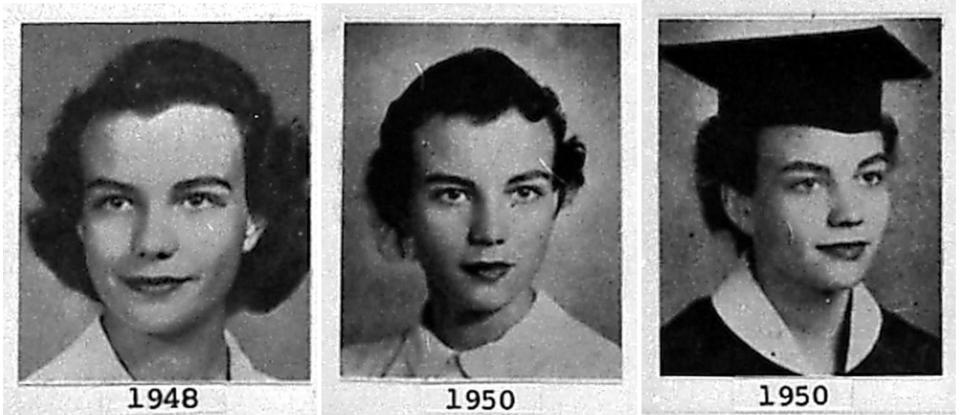
O'Connor applied to Stanford at 16, and only continued to break barriers from there — in her studies, her life and her early legal career.
She had an especially difficult time finding a job after graduating because so many law firms wouldn't interview or hire her because she was a woman.
Chapter 3: Breaking barriers as a young lawyer
Rise from Republican activist to Arizona lawmaker
O'Connor returned to work as an assistant state attorney general for Arizona in 1965, after taking a break from her career to raise her family.
When she returned, she quickly rose to prominence with an appointment to the Arizona Senate. She would later become the first woman in the nation to become a Senate majority leader in a legislature.
Chapter 4: Rise from a GOP activist to an Arizona lawmaker
A tough and demanding judge — but fair
After her time in the Legislature, O'Connor ran for Maricopa County Superior Court judge and won.
It was the start of a long career that culminated in her appointment to the Supreme Court in 1981, and she gained a reputation for being a tough judge.
Chapter 5: A tough and demanding judge
A well-connected candidate draws Washington's attention
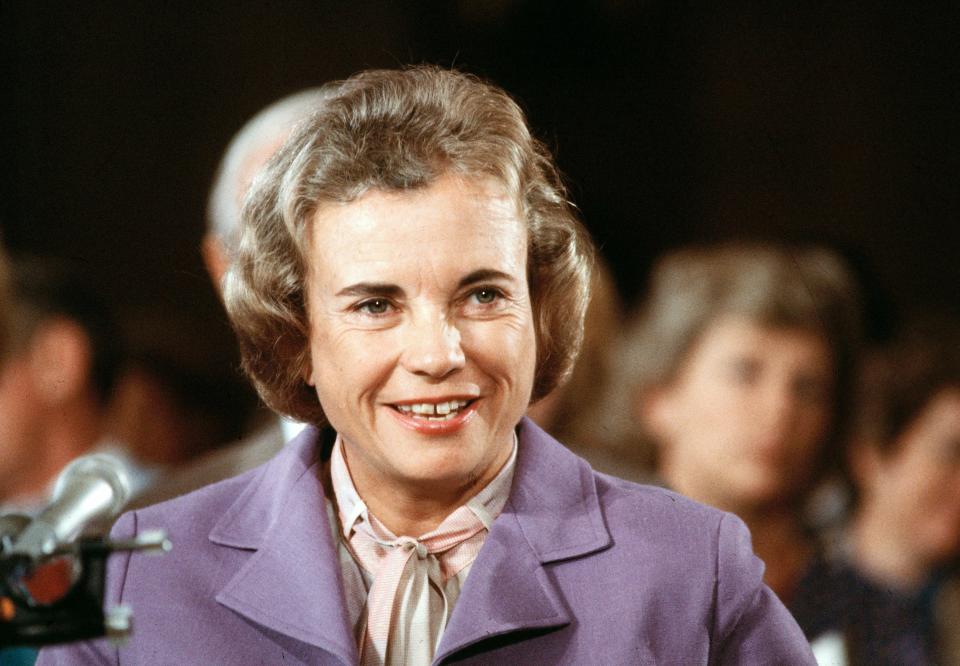
O'Connor always expressed her surprise at being nominated for the Supreme Court, but there was practically no competition.
She also had the support of Arizona Sens. Dennis DeConcini and Barry Goldwater and two Supreme Court justices.
Chapter 6: Help from surprising places
Confirmation hearing foreshadowed today's politics
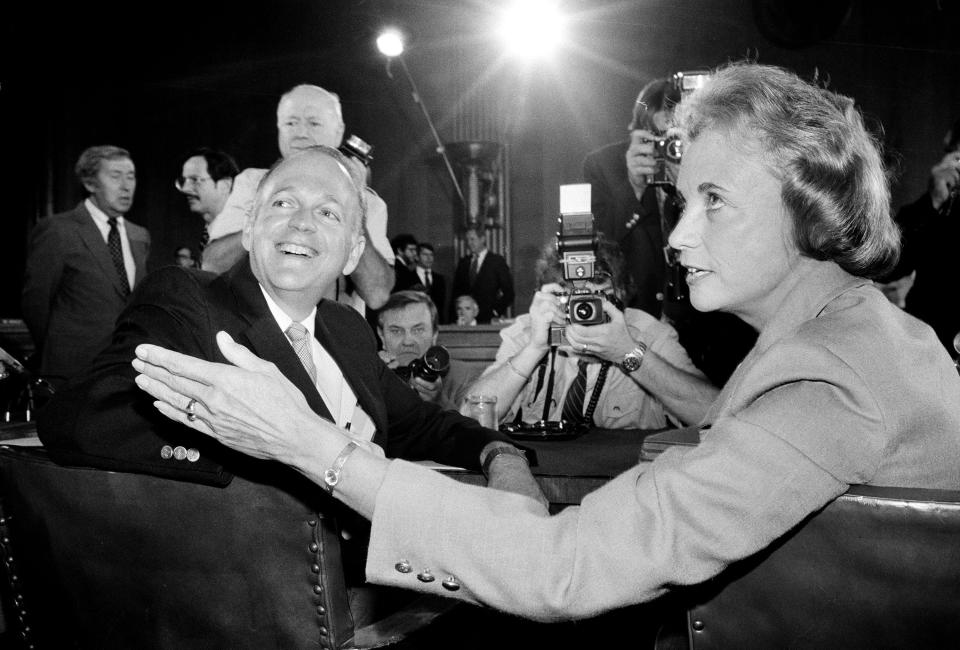
When President Ronald Reagan nominated O'Connor for the Supreme Court in 1981, her Senate confirmation hearing took on a new — and now familiar — tenor.
There was increased interest, both from the public and Congress members, and overwrought political tones to the hearings.
Chapter 7: A confirmation hearing and live TV coverage
As the Supreme Court shifted right, she shifted to the middle
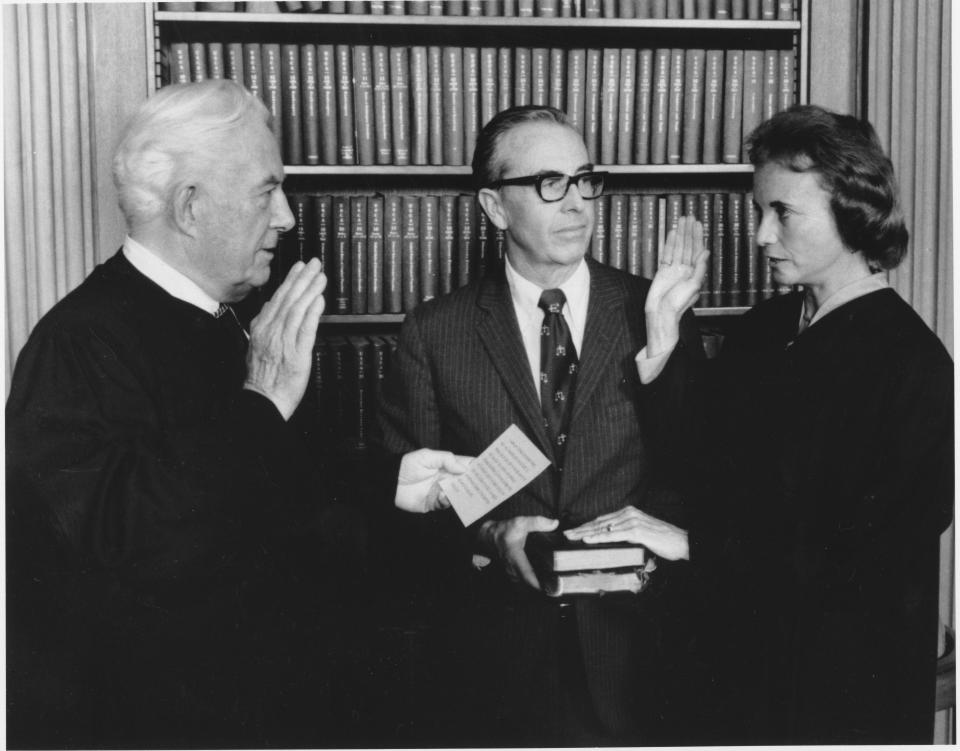
O'Connor, a conservative, joined a bench of largely Republican appointments. However, the court shifted further and further to the right, each time pushing O'Connor closer to the middle.
She was also an unpredictable and frequent swing vote. But she was no "blank check." She approached each case based on its facts.
Chapter 8: She wasn't a 'blank check' on the court
On Roe v. Wade, gay rights and a presidential election
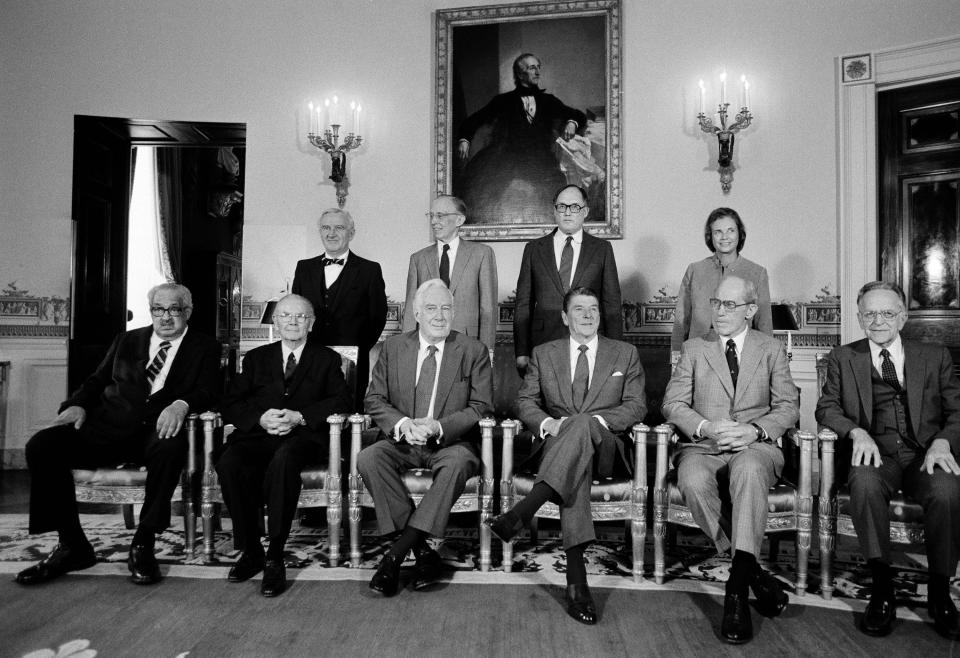
O'Connor served on the Supreme Court for nearly 25 years. In that time, she had the chance to weigh in on many cases. Three important ones to remember are: Planned Parenthood v. Casey, Lawrence v. Texas and Bush v. Gore.
Chapter 9: 3 key Supreme Court cases to remember
In retirement, a focus on civics and conversation
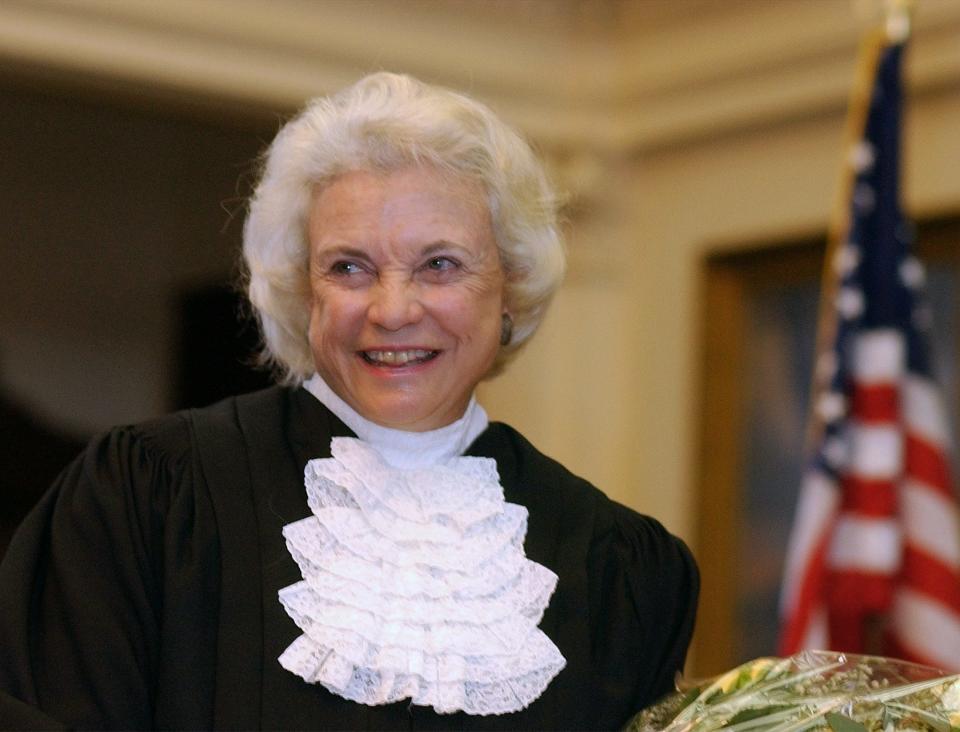
O'Connor stepped down from the court in 2006 at 75 so she could care for her husband, John Jay O'Connor.
But she didn't slow down. O'Connor started organizations, spoke publicly, taught and worked to teach people about civics.
Chapter 10: After retirement, a focus on civics
Raising 3 boys and breaking the glass ceiling

O'Connor and her husband, John Jay O'Connor, raised three boys in Phoenix. Her sons recall days full of activities, trips to the ranch and other unforgettable moments
"She still played all the traditional roles of what a mom is and ran the household and organized our activities," O'Connor's son Jay said. "She just was incredibly busy juggling those two things at the same time and was an early role model for how to deal with those challenges."
Chapter 11: The mom who raised 3 boys and broke the glass ceiling
This article originally appeared on Arizona Republic: Sandra Day O'Connor biography: Arizona ranch girl, American legend

